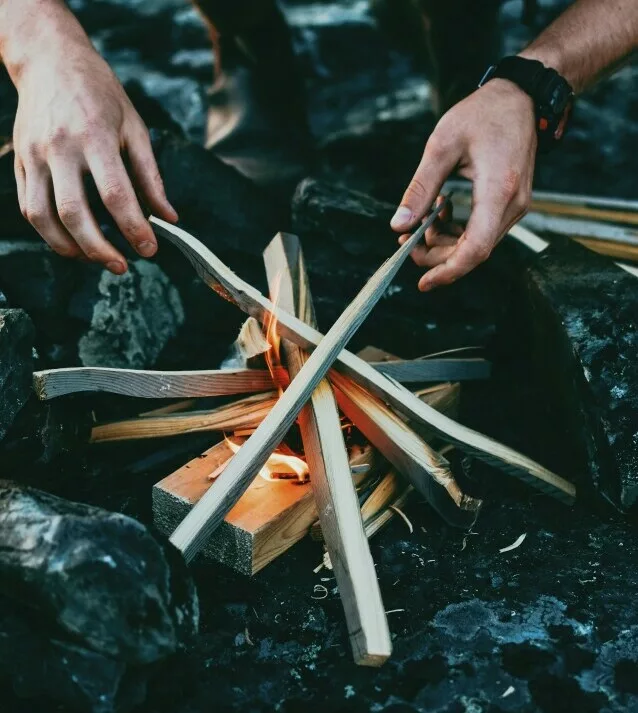Hone Your Skills and Stay Safe

Embarking on a hiking adventure can be a thrilling experience, but it’s crucial to be prepared for any situation that may arise in the wilderness. Whether you’re a seasoned hiker or just starting, knowing essential survival skills can make a significant difference. Here are some crucial tips and tricks to keep you safe and help you thrive in the great outdoors.
1. Thaw Cold Feet
To warm up cold feet quickly, swing your leg forcefully back and forth like a pendulum. This movement encourages blood flow to your extremities, helping to thaw your cold feet and prevent frostbite.
2. Estimate Distance Traveled
Understanding how far you’ve traveled can help you navigate better. The average footstep is about 30 inches, and most people walk at a speed of around 3 mph on flat ground. This knowledge allows you to estimate the distance covered during your hike.
3. Find North Using a Clock Face
If you need to determine direction and have an analog watch, hold it flat with the hour hand pointing at the sun. The point halfway between the hour hand and 12 o’clock marks south. Remember to adjust for daylight-saving time by using 1:00 instead of noon.
4. Orient Yourself Using the Moon
The moon can also guide you. A crescent moon rising before sunset means the illuminated side faces west, while one that rises after midnight has its bright side facing east.
5. Find a Natural Bandage
In case of a minor injury, you can use dried sphagnum moss as a natural bandage. It has antibacterial properties that can help prevent infection.
6. Escape Biting Insects
To avoid biting insects, seek out windy spots or apply mud to exposed skin. Rubbing birch bark oil on your skin and clothing can also repel bugs effectively.
7. Identify a Coral Snake
Remember the rhyme: “Red on yellow, kill a fellow. Red on black, friend of jack.” This helps you distinguish between the venomous coral snake and the harmless milk snake.
8. Re-warm Frostbitten Skin
If you experience frostbite, re-warm the affected area by placing it in lukewarm water or using hot wet cloths. Avoid using dry heat or rubbing the skin, as this can cause further damage.
9. Self-arrest Without an Ice Axe
In the event of a fall, roll onto your stomach, face uphill, and dig in your boots to stop your descent if you don’t have an ice axe.
10. Fix a Broken Shoelace
A broken shoelace can be a hassle. Skip the toe eyelets or cut the other lace in half to secure your shoe and continue hiking.
11. Find North Using the Stick-and-Shadow Method
Place a stick vertically in the ground, mark the shadow tip, wait 15 minutes, and mark again. Connecting these marks will give you an east-west line to help you orient yourself.
12. Identify and Treat Heat Exhaustion
Heat exhaustion symptoms include heavy sweating, cool wet skin, dizziness, and a rapid pulse. Rest in a cool place, elevate your feet, fan yourself, and drink cool water with salty snacks to recover.
13. Ascend a Scree Slope
When climbing a scree slope, kick steps into the loose stones and shift your weight forward to maintain stability.
14. Descend a Scree Slope
Use short shuffling steps, dig in your heels, and use an ice axe or trekking poles to safely descend a scree slope.
15. Make Water from Snow
To hydrate, melt snow over a stove or mix snow and water in a bottle and shake well. This will prevent the snow from lowering your body temperature.
16. Splint a Broken Arm
If someone breaks an arm, use a deflated sleeping pad or straight sticks as splints, securing them with straps or cloth strips to immobilize the injury.
17. Escape an Avalanche
During an avalanche, use swimming motions to stay near the surface and create a breathing space as the slide slows to increase your chances of survival.
18. Estimate Daylight
You can estimate the remaining daylight by holding your hand up to the horizon. Four fingers between the sun and horizon indicate roughly one hour of daylight left; each finger represents about 15 minutes.
19. Know Your Water Needs
On average, you lose about 1.5 liters of water every 24 hours. This increases to 1 liter per hour with exertion and heat, so plan your water intake accordingly.
20. Collect Dew
Wrap absorbent clothing around your legs and walk through tall grasses in the early morning. Then, wring out the moisture collected from the dew to gather drinking water.
21. Tie a Prusik Loop
A Prusik loop is useful for ascents and descents along a climbing rope. Learning this knot can enhance your climbing safety and efficiency.
22. Make Rope
If you need to make rope, use the inner bark of dead tree trunks or fibrous stalks from hemp plants. This can be handy for various survival tasks.
23. Signal Distress
In an emergency, build a large X on the ground, signal SOS with a whistle or mirror, wave your arms in a circle, or create black smoke using petroleum products to attract attention.
Knowing these survival skills ensures that you’re well-prepared for any challenges you might face while hiking. Stay safe and enjoy your outdoor adventures!